Holly Walrath's Blog, page 5
September 21, 2023
Fantastic Femmes at Fantastic Fest
Interstellar Flight Magazine is back at Fantastic Fest in Austin, Texas this week bringing you coverage of the best films hitting the screens soon. Chock full of world premieres, celebrity appearances, five short film blocks, live podcast recordings, horror drag shows, secret screenings, and over 90 feature films, this year’s lineup is looking lit.
This year, I’m highlighting the films from the festival featuring leading ladies and women’s stories. Of course, the fest is also showing some pretty badass movies with male leads, including Peter Dinklage (my GoT crush) in The Toxic Avenger reboot, a mini film festival all about Vin Diesel, a dude-heavy Pet Sematary: Bloodlines prequel with an unexpected cameo by David Duchovny, Scott Bakula in Divinity, Mike Flanagan’s new Netflix series The Fall of the House of Usher, John David Washington in The Creator from Gareth Edwards, director of Rogue One — to name a few.
The Most Exciting Films Screening at Fantastic Fest Featuring Women in Leading Roleshttps://medium.com/media/475d70d37fbaa303bebca96fcda80090/hrefTotally Killer (Prime Video & Blumhouse) ft. Kiernan Shipka17-year-old Jamie has that Gen Alpha energy as she puts down her mom, the survivor of a shocking murder thirty-five years ago. Played by Kiernan Shipka of Chilling Adventures of Sabrina on Netflix, Jamie is set up to be a witty, sarcastic final girl as she has to face a masked murderer. The film’s pitch spins the genre by time-traveling Jamie back to 1987, where she ends up in a Back-to-the-Future-with-Serial-Killers plot to team up with her teen mom and take down the killer.
 Image Courtesy NEONEILEEN (NEON) ft. Anne Hathaway and Thomasin McKenzie
Image Courtesy NEONEILEEN (NEON) ft. Anne Hathaway and Thomasin McKenzieComing in December from arthouse NEON, Eileen is based on the 2015 debut novel by Otessa Moshfegh. The book was shortlisted for the National Book Critics Circle Award and the Man Booker Prize and won the Pen/Hemingway Award. Set in 1964 in Massachusetts, the film follows a young prison secretary named Eileen (Thomasin McKenzie), who is trapped in a drab life until bombshell Rebecca (Anne Hathaway) sweeps into her life.
NEON purchased the film for a rumored $15 million (Variety). If it’s anything like the book, which NPR called “Dark, Damaged Fun,” the film should be a worthwhile watch.
https://medium.com/media/3af7652875056372514f680045bb112c/hrefUFO Sweden (Crazy Pictures) ft. Inez Dahl TorhaugAmericans love to be charmed by Swedish accents, and this heartfelt and funny movie about little green men is no exception. Although it features a whacky ensemble cast, the heart of the film is teen Denise (Inez Dahl Torhaug), who seeks out the help of a local ufology society UFO Sweden for help after her father’s car reappears mysteriously years after going missing.
I’m a big sucker for small-budget sci-fi films that still manage to include awesome VFX, so this one looks to be a delight.
https://medium.com/media/4333fcaf8b2559caf328c52f02e613df/hrefKilling Romance (Warner Bros. Korea) ft. Lee Ha-NeeFailed actress Hwang Yeo-rae (Lee Ha-Nee) falls for the perfect man — rich, charming, and secretly a monster. Johnathan’s a bizarre wealthy terror that can “only be escaped by death.” Absurd, K-pop sweet, and hilarious, Killing Romance looks like a hoot.
https://medium.com/media/0ec647af65f38243b9305b3e1e770319/hrefThe People’s Joker (Haunted Gay Ride Productions) ft. Vera DrewOkay, imagine a gender-remixed megacut of every Joker movie ever made, smashed up and pieced together as camp horror, and you’ve got Vera Drew’s The People’s Joker. This pop culture mashup looks delightfully sardonic, but there’s a deeper message here of what it means to be trans in today’s nerdscape. The quasi-fandom story of the Joker operates as a conceit under which topics like transitioning, dysphoria, and depression can be explored safely — and with more than a few laughs.
This one is part of Fantastic Fest’s “Burnt Ends” selections, films that “celebrate micro-budget oddities from outlier filmmakers who provoke and defy conventions of aesthetics and taste.” Yum.
https://medium.com/media/aa4eef9b9a1191988ca0650123afc513/hrefProperty (Dark Star Pictures) ft. Malu GalliWhen Tereza (Malu Galli) and her husband escape a hostage situation, they retreat to the family’s country estate in their new armored car, unaware that a worker’s revolt is taking place. They get caught in the crossfire and Tereza escapes to the techy car, only to discover it can only be operated by her husband, who is being held hostage. In what promises to be a claustrophobic nightmare, this film is Christine meets Panic Room with a twist of class politics.
https://medium.com/media/c77f2ea6e6e6ecc3f5cb5eb36c250d8c/hrefAnimalia (Totem) ft. Oumaima BaridNoé Bach provides a beautiful, haunting cinematography for this film about pregnancy and the uncanny. Itto (Oumaima Barid) is pregnant and married to a wealthy businessman but finds herself stuck when a strange storm takes over Morocco. The setting looks to be a huge part of the movie’s tone and vibe, as stray dogs appear to play a metaphorical role in Itto’s struggle to find her way home and herself. Directed by French-Moroccan Sofia Alaoui.
https://medium.com/media/6dc3f136e6222f3972733be7f7ce954b/hrefRestore Point (Robert Hloz) ft. Andrea MohylováI’m always excited to see sci-fi films set and produced in non-US countries because they always have a fresh take on the genre. Restore Point promises to be that and more from the Czech Republic. The film follows the common trope of people being “rebooted” to their last save point after death. Police officer Em Trochinowska (Andrea Mohylová) investigates the murder at the Restoration Institute in what looks like a very shiny, very pretty scifi thriller.
 SUITABLE FLESH (Shudder) ft. Heather Graham
SUITABLE FLESH (Shudder) ft. Heather GrahamPremiering in October and acquired for streaming by Shudder, Suitable Flesh stars one of my favorite 90s starlets, Heather Graham in an adaptation of H.P. Lovecraft’s novella “The Thing on the Doorstep” (1933), set in the notorious Arkham Sanitarium. The film gender-swaps the Lovecraft story, placing Graham in the center role of psychologist. Eldritch horrors abound in this erotic horror thriller.
 In My Mother’s Skin (Amazon Studies/Epicmedia) ft. Felicity Kyle Napuli
In My Mother’s Skin (Amazon Studies/Epicmedia) ft. Felicity Kyle NapuliThis gory Filipino fairy tale follows the WWII-era story of a family living under Japanese occupation. Tala (Felicity Kyle Napuli) has to care for her family when her father leaves. Tala finds a mysterious place in the woods and seeks help from a fairy played by Beauty Gonzalez, but like all fay bargains, it quickly goes sideways.
Who doesn’t love a slow burn with flesh-eating monsters?
 The Sacrifice Game, Image Courtesy IFC FilmsThe Sacrifice Game (Shudder, Red Sea Media) ft. Madison Baines, Georgia Acken, and Chloë Levine
The Sacrifice Game, Image Courtesy IFC FilmsThe Sacrifice Game (Shudder, Red Sea Media) ft. Madison Baines, Georgia Acken, and Chloë LevineReminiscent of Black Christmas (1974), this spoofy feminist coming-of-age holiday tale from director Jenn Wexler follows Samantha (Madison Baines) and Clara (Georgia Acken) as students stuck at their boarding school over Christmas with their chaperone Rose (Chloë Levine). The teens quickly get caught up in surviving a demonic cult home invasion.
I’m still reeling from the delight of last year’s Violent Night, so here’s hoping this is another bloody Christmas pin on my map of holiday-themed horror.
 STOPMOTION (Robert Morgan) ft. Aisling Franciosi
STOPMOTION (Robert Morgan) ft. Aisling FranciosiElla Blake (Aisling Franciosi) is a stop-motion animator who learned from her overbearing mother, who forces Ella to do her work now that she is ill. When her mother dies, Ella starts a macabre new puppet film. But she struggles to hold onto what’s real in a world of deliciously dark stop-motion creations.
Stop-motion is one of my favorite forms of filmmaking, and Robert Morgan’s (known for the creepy cult favorite short “The Cat with Hands”) stop-motion animations are evocative, pensive, and satisfyingly shuddersome.
 Fantastic Fest Poster Art Courtesy Chris Bilheimer
Fantastic Fest Poster Art Courtesy Chris BilheimerThis article is part of Interstellar Flight Magazine’s coverage of Fantastic Fest , taking place in Austin, TX, 9/21–9/28, 2023. We thank Fantastic Fest and Alamo Drafthouse for providing access to these films!
 Coming soon from Interstellar Flight Press!
Coming soon from Interstellar Flight Press!Interstellar Flight Magazine publishes essays on what’s new in the world of speculative genres. In the words of Ursula K. Le Guin, we need “writers who can see alternatives to how we live now, can see through our fear-stricken society and its obsessive technologies to other ways of being, and even imagine real grounds for hope.” Visit our Patreon to join our fan community on Discord. Follow us on Twitter, Facebook, or Instagram.
[image error]Fantastic Femmes at Fantastic Fest was originally published in Interstellar Flight Magazine on Medium, where people are continuing the conversation by highlighting and responding to this story.
September 18, 2023
Book Launch for THE LONG FALL UP by William Ledbetter

“William Ledbetter’s stories exists at the crossroads between hard and soft: they’re full of hard space, hard choices, and hard lives, but also the soft hearts of the people who work there, make them, and live them. Bill can do more in two pages than some authors do in twenty; he’ll make you love a sweater, fear for a ship, and more. So whatever your preference, hard or soft: if Bill Ledbetter has written a story, you want to read it. Simple as that.” — Trevor Quachri, Editor of Analog Science Fiction and Fact Magazine
Save the date! We’re hosting an online book launch for THE LONG FALL UP by William Ledbetter. Chock full of heartfelt stories, you won’t want to miss this reading and chance to chat with the author!
Date:
November 6, 2023
6 :00pm CST
Online via Zoom
by William Ledbetter
From bestselling Nebula-Award winning William Ledbetter comes a groundbreaking collection of science fiction short stories that will bend your heart like a black hole. From AI to robot medics to life on Mars, Ledbetter takes real tech, blends it with hard science fact, and invents futures full of fantastic fiction. Includes 17 previously published stories and one original story.
About the AuthorWilliam Ledbetter is a Nebula Award winning author with two novels and more than seventy speculative fiction short stories and non-fiction articles published in five languages, in markets such as Asimov’s, Fantasy & Science Fiction, Analog, Escape Pod and the SFWA blog. He’s been a space and technology geek since childhood and spent most of his non-writing career in the aerospace and defense industry. He is a member of SFWA, the National Space Society of North Texas, and a Launch Pad Astronomy workshop graduate. He lives near Dallas with his wife, a needy dog and three spoiled cats.
“In one thousand words, William Ledbetter managed to completely captivate me with his story, ‘What I Am.’ Science fiction tales of this length rarely work for me. It’s so hard to compress solid science, plotting, and characterization into so few words. In this case, however, I was completely captivated by Oscar and his companion. The science fiction element was perfect. At the same time, Bill created a compelling situation and made me desperately care about his characters. These essential qualities are to be found in his longer works as well.” — Sheila Williams, Editor of Asimov’s Science Fiction
Registration is required for this event. Visit the Eventbrite listing to sign up!
 [image error]
[image error]Book Launch for THE LONG FALL UP by William Ledbetter was originally published in Interstellar Flight Magazine on Medium, where people are continuing the conversation by highlighting and responding to this story.
September 12, 2023
Can a Poem Scare You?
September 5, 2023
How to Teach Writing Your Way
August 25, 2023
The Best Speculative Poetry of the Year is Explosive
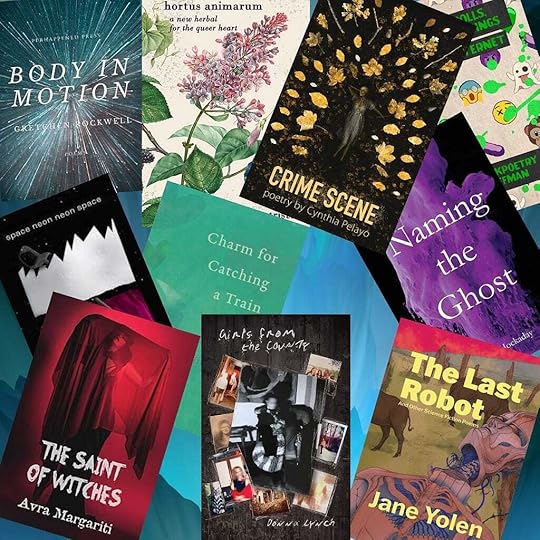
This is my fifth (!) year reviewing selections from the SFPA (Science Fiction and Fantasy Poetry Association) Elgin Award for best speculative poetry book. A full list of nominated books is available on the SFPA website. This year’s award chair is Morgan L. Ventura, who I would like to thank for diligently tracking nominations. Here are my previous reviews:
The Best Speculative Poetry of the Year is EpicSpeculative Poets Renegotiate Femininity & the StrangeThe Best Speculative Poetry Engages in Experimental FormsThe Best Speculative Poetry is Creepy AFAbout the Awards: The Elgin Awards, named for SFPA founder Suzette Haden Elgin, are presented annually by SFPA for books published in the preceding two years in two categories, Chapbook and Book. Chapbooks must contain 10–39 pages of poetry and books must contain 40 or more pages of poetry. E-books are eligible, as well as print. Books that won first–third place in the previous year’s Elgin Awards are ineligible. Single-author and collaborative books are eligible; anthologies are not. Books containing fiction as well as poetry are not eligible. Books must be in English, but translations are eligible. In the case of translations that also contain the poems in the original language, those pages will not count toward the total page count. Nominated books must be made available to the Chair upon request to remain eligible.
Thoughts on This Year’s BooksFirstly, I would like to point out that this year’s Elgin nominees include far fewer chapbooks than normal, which is a shame because chapbooks are the bread and butter of poetry. It makes sense that we are seeing more full-length collections, though, as award-giving bodies rarely recognize chapbooks. This is one of the reasons I enjoy the Elgin Award. Chapbooks are an important stepping stone for poets.
I was delighted to see far more LGBTQIA+, trans, and queer voices on the list this year than in previous iterations. It gives me hope that the powerful association between the other and queerness continues to be explored and is reaching further recognition.
I was also particularly delighted to see that more publishers are doing the work of providing context to experimental works that benefit from the author’s perspective. I never tire of reading author notes, nor do I feel they take away from the work itself. I also appreciated that more publishers are opting to highlight the work of cover artists and typographers in their end matter.
In compiling my reviews, I was disappointed that many works were not available for purchase easily online, didn’t have a website, or were not searchable by ISBN (often lacking one entirely). While speculative poetry has come a long way, it’s important to note that even self-published works should have a home online for readers and reviewers to find the book.
On this year’s list are several poetic sequences (often referred to as novellas in verse), a form that combines narrative and lyricism. I’m excited to see more poets taking a risk with longer forms and curious to see how this new trend evolves. Poets love to quibble over the definition of these terms. In my definition, a poetic sequence is a series of poems on the same topic, while an epic poem is one long uninterrupted poem. Poetic sequences are not necessarily narrative, whereas epic poems are inherently about one larger story arc. A novella-in-verse can be either.
These books are explosively excellent. Every one of them is worth a read, and not just for their storytelling but for their use of structure, awareness of the speculative poetry market, and outstanding use of emotion.
How I Create This ListHow do I pick books for this list? This is merely a recommended reading list, not a “best of,” because the list I am pulling from is the nominated works from the SFPA membership. My primary concern is highlighting works I feel deserve more reads. I tend to skew heavily feminist, focusing on writers of color, LGBTQIA+ voices, and disabled poets. The list is subjective to my tastes. I spend less time on men (cis-gendered, heterosexual) because those voices have enough support. I always make a Goodreads list of the total nominated works, which you can access here.
Lastly, in the past, there has been some (IMHO short-sighted) discussion as to whether such lists are “bad” because they skew members’ voting towards one work or the other. I find this difficult to believe because I review a huge number of books selected for the Elgin. I also believe the SFPA membership has enough independent thought to be able to do their own voting. The list is not to highlight those works I think you should vote for but to highlight the amazing works nominated each year and lift up the endeavor as a whole. Vote as you see fit.
One more note: I am writing from my perspective. If I make an error, please comment or message me. I never want to misrepresent a work simply because I misread it. Also, this list contains works I wrote or edited. I feel poets should be vocal about promoting their work, but if this bothers you, you can scroll on past.
Chapbooks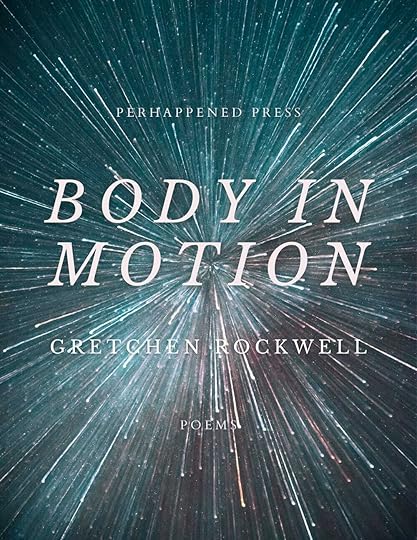 body in motion, Perhappened Press, 2021body in motion (Perhappened Press, 2021)by
Gretchen Rockwell
body in motion, Perhappened Press, 2021body in motion (Perhappened Press, 2021)by
Gretchen Rockwell
Rockwell is one of the premier speculative poets focusing on issues of the body and body in motion (Perhappened Press, 2021)is no small addition to Xer’s catalog. Nominated along with Rockwell’s 2021 Lexicon of Future Selves (Vegetarian Alcoholic Poetry, reviewed by me in 2022), this chapbook explores space as a metaphor for the body. From Egyptian goddesses to Tantalus to Arthurian myths, Rockwell softly pivots on an axis of feminism and lyricism. Xier characteristic exploration of structure exists in poems like “The Aerialists” and “Launch Sequence,” utilizing white space to imply outer space. Every poem is an emotional star in this tiny constellation. Stay tuned for Rockwell’s new poetry collection, listen, forthcoming from Interstellar Flight Press.
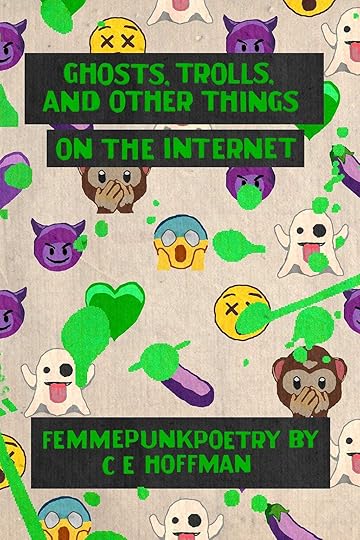 Ghost, Trolls, and Other Things on the Internet, Bottlecap Press, 2022Ghosts, Trolls, and Other Things on the Internet (Bottlecap Press, 2022)by C. E. Hoffman
Ghost, Trolls, and Other Things on the Internet, Bottlecap Press, 2022Ghosts, Trolls, and Other Things on the Internet (Bottlecap Press, 2022)by C. E. HoffmanI was drawn in by the cover for Hoffman’s slim chap, printed beautifully by Bottlecap Press in the old-school zine style. “Femmepunk” is a genre of the speculative I’ve longed to name, and I’m delighted to see this term used here. The genre, to me, is an exploration of the simmering rage of feminism wrapped up in a digestible packet of SFF tropes about technology. Hoffman explores the inequality of algorithms, body dysmorphia in selfies, and how to stand up to trolls. Pop culture abounds from Jonathan Larson to Buffy to Taylor Swift in a world “Before punk was an industry; / and love became commodity; / before cleverness was click bait”. Short, sour-sweet, and witty.
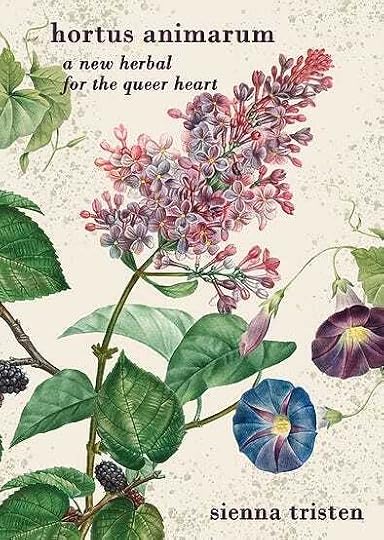 hortus animarum, Frog Hollow Press, 2022hortus animarum (Frog Hollow Press, 2022)
hortus animarum, Frog Hollow Press, 2022hortus animarum (Frog Hollow Press, 2022)by Sienna Tristen
9/10 gardeners agree you are aggressive frustrating invasive
too much because no one asks anything but how do we
stop get rid of controlcontrolcontrol
If you know me at all, you’re probably aware I’m a sucker for naturalism and old field guides, so Tristen’s queer “herbal” indeed healed my stressed-out, shitty little gay heart. Arranged in a “garden party” of different green things à la Louise Glück’s Wild Iris, this chapbook explores love/rs through the metaphor of plants. Each poem is a prose poem except the opening poem, which works well to guide the reader through each mini-narrative. I particularly enjoyed the “index of related terms” and the recognition of the cover art’s sources. Every book should include this in its contents.
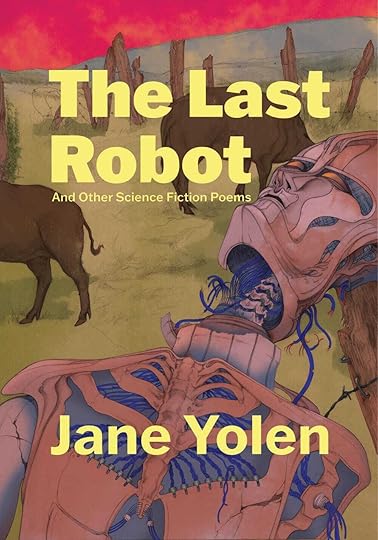 The Last Robot and Other Science Fiction Poems, Shoreline of Infinity, 2021The Last Robot and Other Science Fiction Poems (Shoreline of Infinity, 2021)by Jane Yolen
The Last Robot and Other Science Fiction Poems, Shoreline of Infinity, 2021The Last Robot and Other Science Fiction Poems (Shoreline of Infinity, 2021)by Jane YolenAs Jo Walton so astutely notes in the introduction, “If Science Fiction had a poet laureate it would be Jane Yolen.” Every book of speculative poems from Jane Yolen is a treat, and from such a prolific children’s book author, it is a comfort to read a Yolen book. If you’re like me, you may not be aware that the magazine Shoreline of Infinity releases the occasional book, which is a shame because this title is a delight. I particularly loved “Can SciFi Save Us?” which answers, “…a single story told enough times, / warmed in the mouths of a thousand tellers, / resurrected from a cross of Martian timber, / plowed into the dirt of a million stars / might make a difference.”
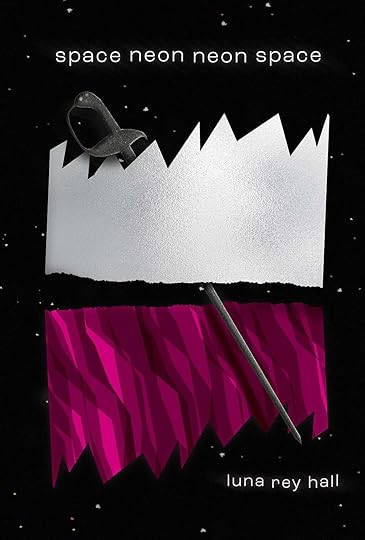 space neon neon space, Variant Lit, 2022space neon space (Variant Lit, 2022)by Luna Rey Hall
space neon neon space, Variant Lit, 2022space neon space (Variant Lit, 2022)by Luna Rey HallLuna Rey Hall has an adroit grasp on experimental structures that is fascinating to behold. But beneath that lies emotional and heart-wrenching work that isn’t afraid to go deep. “coming out to my mother” explores the trauma of coming out when the parent is diagnosed with cancer, “tiktok comment section” dives into the terror of being non-binary online, and “dypshoria” is an unflinching representation of fatness as it relates to the queer body. Science grounds these poems from bioluminescence to cells, and I’m left assured that all queerness is inherently speculative. I, for one, can’t wait to see what Hall writes next.
 Terror of the Zombie Zonnets, House of the Fighting Chupacabras, 2022Terror of the Zombie Zonnets: Season Three of Planet of the Zombie Zonnets (House of the Fighting Chupacabras, 2022)by Juan Manuel Pérez
Terror of the Zombie Zonnets, House of the Fighting Chupacabras, 2022Terror of the Zombie Zonnets: Season Three of Planet of the Zombie Zonnets (House of the Fighting Chupacabras, 2022)by Juan Manuel PérezI’ve had the pleasure of listening to Juan Manuel Pérez read his poetry at many a Texas-based science fiction convention, and each time it is a treat. Pérez is indeed the “Zombie Texas Poet of the Year.” A strictly form-based poet, Pérez twists the sonnet into new, more accessible poems. Pérez’s work is both hilarious and serious, charming and essential because it explores the intersection between Mexican-American indigenous identity and speculative tropes. These poems may seem light on the surface, but if you can’t see beyond the humor, “move in closer so you can hear better.” Stay tuned for Juan Manuel Pérez’s new poetry collection, Bury My Heart Under the Martian Sky, forthcoming from Interstellar Flight Press.
Full-length Books […], Astrophil Press, 2021[…] (Astrophil Press, 2021)by Ava Hofman
[…], Astrophil Press, 2021[…] (Astrophil Press, 2021)by Ava HofmanAs Never Angeline North says, “ava hofman has mercifully rescued experimental poetry from academia and dumped it squarely into the pit of the queer occult.” It’s rare to find true explorations of the concrete poem form in speculative poetry, but Hofman obliges in this collection of visual poems. On the surface, Hofman’s work is not exactly accessible to the average reader or perhaps even a poetry reader familiar with experimental work. I found myself flipping to the end of the book in search of the author’s note or “Changelogue,” which did not disappoint in adding the necessary context to understand and appreciate this work and perhaps should have come first in the book. This isn’t to say that this work can’t be enjoyed without the context, but it is so very important that it almost feels like a part of the book itself. This book of poetry was written during transition and as a way for the author to find herself through the exploration of phantasmagoric medieval texts.
As Hofman says, “queer people have existed forever, but any evidence of them in the archive is precious, because so often our histories were destroyed, or simply could not be preserved in cultures defined by homophobia and transphobia.” […] is an attempt to explore “the archive” of medieval texts through a queer voice, inspired by Felix Grendon’s 1909 translation of Old English charms. Fans of the illuminated manuscript will recognize Hofman’s choice of arrangement. There is so much to say here about the power of fragment, of finding oneself in the past, and how found text works in poetry. But I’ll let this powerful work speak for itself.
[…] may i speak […] // my holy pages, with […] neither nothing […]
[…] nothing […] // […] may i […] may […] speak it […] speak, […]
 Bless the Daughter Raised by a Voice in Her Head, Penguin Random House, 2022Bless the Daughter Raised by a Voice in Her Head (Penguin Random House, 2022)by Warsan Shire
Bless the Daughter Raised by a Voice in Her Head, Penguin Random House, 2022Bless the Daughter Raised by a Voice in Her Head (Penguin Random House, 2022)by Warsan ShireWarsan Shire is one of the most important poets of our current time. A Somali British writer born in Nairobi and raised in London, Shire has won some of the most prestigious awards in poetry today. This book nominated for the Elgin is her first full-length poetry collection, exploring girlhood, family dynamics, life as a refugee, and imagination. Speculative elements like body horror, transhumanism, ghosts, cannibalism, Utopia, and 90s pop culture weave with a narrative of growing up other. New poets could benefit from studying Shire’s poetry as a lesson in making every word count and expressing vulnerability to connect emotionally with the reader. Readers will appreciate the inclusion of the glossary, which adds context to this powerful work.
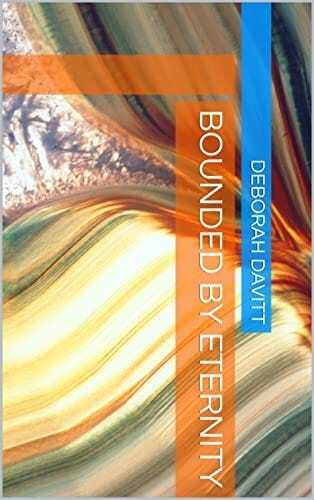 Bounded by Eternity, Edda Earth, 2022Bounded by Eternity (Edda Earth, 2022)by Deborah L. Davitt
Bounded by Eternity, Edda Earth, 2022Bounded by Eternity (Edda Earth, 2022)by Deborah L. DavittReaders interested in narrative forms will enjoy this linked poem sequence inspired by the story of Oberon, the faerie king from Shakespeare’s A Midsummer Night’s Dream. Here, Davitt explores Oberon’s origin as a character in the Nibelungenlied, a German epic poem in the vein of Lord of the Rings. Davitt is, at heart, a storyteller, and readers who love high fantasy will likely recognize much of the layering happening in this collection. The average reader may struggle to put together the context here, as the story is richly referential and relies on the deep history of the fantasy poetry epic. The novella in verse is a tricky form, but who doesn’t love a story about a fay king? For more of a deep dive, check out Interstellar Flight Press’ interview with Davitt by T.D. Walker.
 Crime Scene, Raw Dog Screaming Press, 2022Crime Scene (Raw Dog Screaming Press, 2022)by Cynthia Pelayo
Crime Scene, Raw Dog Screaming Press, 2022Crime Scene (Raw Dog Screaming Press, 2022)by Cynthia PelayoI reviewed Pelayo’s Into the Forest and All the Way Through in 2021, and I’m excited to read another true crime poetry collection that also won the HWA Bram Stoker Award. Pelayo plays with the novella in verse/epic, as she terms it. The poems are meant to be read sequentially as a series of reports. Pelayo uses a variety of poetic forms, from the prose poem to free verse to experimental poems made entirely of one-word sentences. The poems follow Agent K as she attempts to solve a murder. It’s refreshing to read this familiar story told from the perspective of a female detective. Readers of true crime will enjoy the universal truths of crime that Pelayo explores on the page in poetic form.
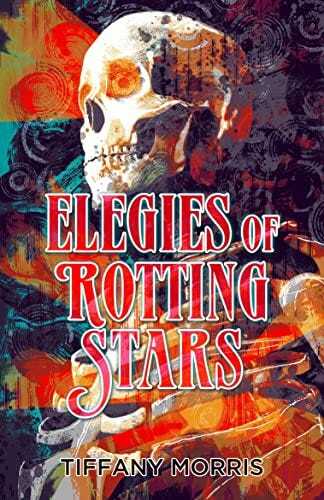 Elegies of Rotting Stars, Nictitating Books, 2022Elegies of Rotting Stars (Nictitating Books, 2022)by Tiffany Morris
Elegies of Rotting Stars, Nictitating Books, 2022Elegies of Rotting Stars (Nictitating Books, 2022)by Tiffany MorrisOne of my favorite things about Tiffany Morris’ poetry is how she takes horror tropes and makes them personal, like in “I Am My Own Haunted House,” with its stunning images and evocative metaphors. Here again, Morris weaves her Mi’kmaw background into many of the poems, but they never feel inaccessible to the unfamiliar reader. This collection is worth reading, if only for the sheer vibes of it all.
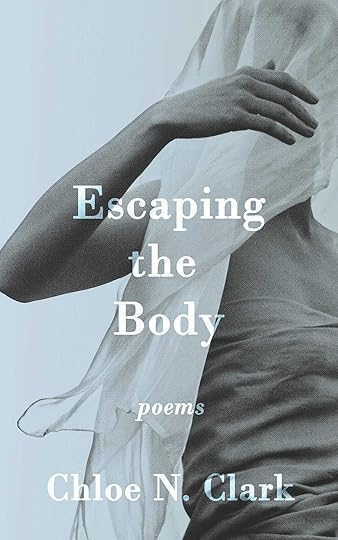 Escaping the Body, Interstellar Flight Press, 2022Escaping the Body (Interstellar Flight Press, 2022)by Chloe N. Clark
Escaping the Body, Interstellar Flight Press, 2022Escaping the Body (Interstellar Flight Press, 2022)by Chloe N. ClarkChloe N. Clark is perhaps one of the most published speculative poets of our time, with her poems appearing in hundreds of journals. Escaping the Body explores space, forests, monsters, myths, spells, magic tricks, forests, and the body, to name a few speculative elements in the collection. Clark’s poetry is accessible and narrative in places, with a satisfying journey through the collection that builds the reader's emotion in a slow burn of subtlety. Reading Clark’s work feels like falling into a conversation with an old friend, one who really loves all the same spooky shit you do. Read Leslie Archibald’s interview with Chloe N. Clark at Interstellar Flight Magazine.
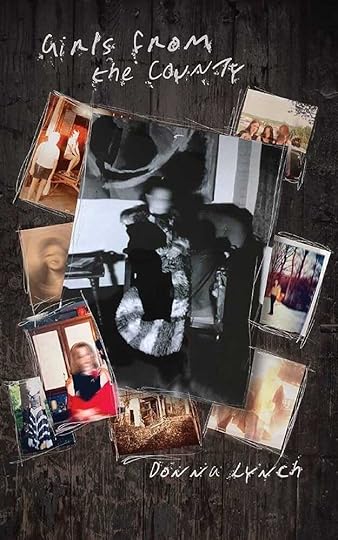 Girls from the Country, Raw Dog Screaming Press, 2022Girls from the County (Raw Dog Screaming Press, 2022)by Donna Lynch
Girls from the Country, Raw Dog Screaming Press, 2022Girls from the County (Raw Dog Screaming Press, 2022)by Donna LynchLynch’s unflinching portrayal of country life runs like a freight train into feminist horror and doesn’t look back. At times both nostalgic and claustrophobic, the poems in Girls from the Country explore the intersection of horror, growing up as a woman, and rural life. “These places want you dead,” Lynch contends, and as someone who grew up in small-town Texas and spent my summers rambling the houses and lands of my country family, I love the brutal honesty with which these poems examine the bitter underbelly of the past. I, too, “wanted to be one of those girls / who died tragically” — and I, too, did ugly things driven by a narrow-minded upbringing that I’m only now learning to untie from my being. This book is a worthwhile read for any fan of horror poetry.
 The Gravity of Existence, Interstellar Flight Press, 2022The Gravity of Existence (Interstellar Flight Press, 2022)by Christina Sng
The Gravity of Existence, Interstellar Flight Press, 2022The Gravity of Existence (Interstellar Flight Press, 2022)by Christina SngChristina Sng is a wizard of the scifaiku or speculative haiku form. Here, Sng has collected many small poems, combining them to great effect. These poems, despite being small, have true depth. The heart and emotion behind them is what stands Sng apart from other speculative haiku poets. It’s not just humor but a deep well of meaning. This one is for you if you love small poems, haiku, and speculative poetry.
Read Archita Mittra’s interview with Christina Sng at Interstellar Flight Magazine.
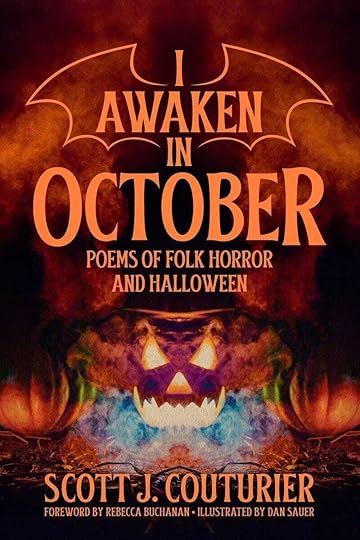 I Awaken in October, Jackanapes Press, 2022I Awaken in October: Poems of Folk Horror and Halloween (Jackanapes Press, 2022)by Scott J. Couturier
I Awaken in October, Jackanapes Press, 2022I Awaken in October: Poems of Folk Horror and Halloween (Jackanapes Press, 2022)by Scott J. CouturierAs I sit in my sweltering house under a struggling Texas AC, I long with every bone in my body for Autumn. I also awaken in October, and so Scott J. Couturier’s poems felt like reading a love letter to my favorite season. These poems are lyrical, susurrus in sound, and full of delightful images that invoke the season of fall. If you want to fall in love with fall again, this is the perfect book for you. All of the Jackanapes Press Halloween-themed books are a worthwhile read. It’s also worth buying in print: The interiors are exquisitely designed, with images that compliment the poems well and don’t overpower the reader. I also appreciated the end matter, which includes bios for the foreword and artist Dan Sauer, who has created many phenomenal speculative poetry covers.
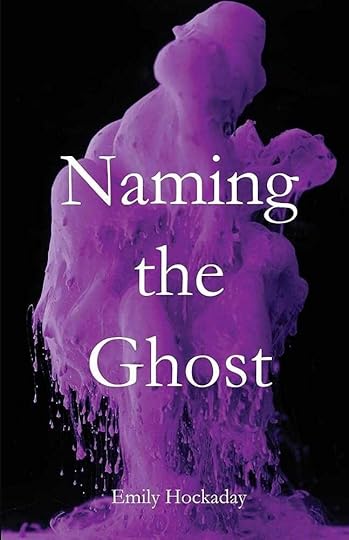 Naming the Ghost, Cornerstone Press, 2022Naming the Ghost (Cornerstone Press, 2022)by Emily Hockaday
Naming the Ghost, Cornerstone Press, 2022Naming the Ghost (Cornerstone Press, 2022)by Emily HockadayEmily Hockaday’s work straddles the line between the “literary” and the speculative, which is to say, we hope she’ll jump ship and let us claim her as our own. This collection focuses on the locus of The Ghost — a well-loved trope in horror poetry but managed deftly with contemporary poetry structures by Hockaday, who extends the metaphor into the domestic. I’m of the belief that the best speculative poetry collections revolve in a kind of triad of topics — in this case: Ghost, Marriage, Motherhood. At once feminist and satisfyingly spooky, Hockaday shows that a well-themed collection is worth the effort.
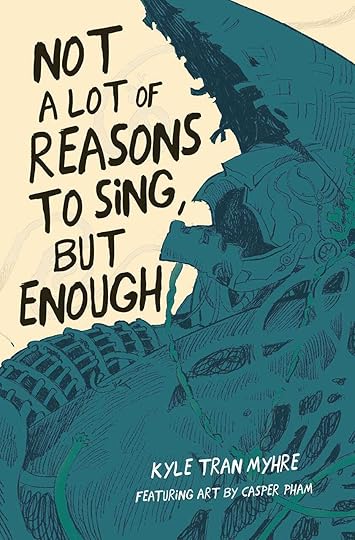 Not a Lot of Reasons to Sing but Enough, Button Poetry, 2022Not a Lot of Reasons to Sing but Enough (Button Poetry, 2022)by Kyle Tran Myhre
Not a Lot of Reasons to Sing but Enough, Button Poetry, 2022Not a Lot of Reasons to Sing but Enough (Button Poetry, 2022)by Kyle Tran MyhreDelightfully Meta and sumptuously illustrated, Kyle Tran Myhre’s ephemera related to the imaginary robot Gyre is an example of a speculative framing that invites the reader into a world and won’t let them out again. I’m a sucker for graphic novels, and this is part graphic novel, part poetry collection, part Princess-Bride-esque adventure. The “memo” note at the beginning of the book does a fantastic job of setting up what the reader should expect from the poems. Unlike what is often the case in complex premises, the poems here do not suffer under too much explanation or too little context. If I could hold up an example of the contemporary speculative novella-in-verse, it would be this book, on par with such emblems as Sofia Samatar’s Monster Portraits. Button Poetry does not disappoint.
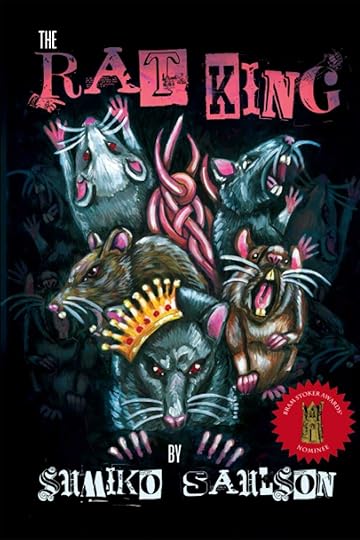 The Rat King, Dooky Zines, 2022The Rat King (Dooky Zines, 2022)by Sumiko Saulson
The Rat King, Dooky Zines, 2022The Rat King (Dooky Zines, 2022)by Sumiko SaulsonRetellings of The Tooth Fairy delight, but I am drawn most to Saulson’s gritty, truth-filled poems about intersectionality, like “Generations of the Imaginarium,” which explores mental illness, ancestry, and the power of imagination. I am fascinated by how Saulson places such conversations, often bombastically and without apologetics, between the fairy tales and horror of speculative poetry. Saulson places pop culture next to romance and the speculative, encouraging the reader to make connections between them. These poems travel far and wide, at times internal and emotional, at others brash and magical. This collection’s punk rock roots are showing, and I’m listening.
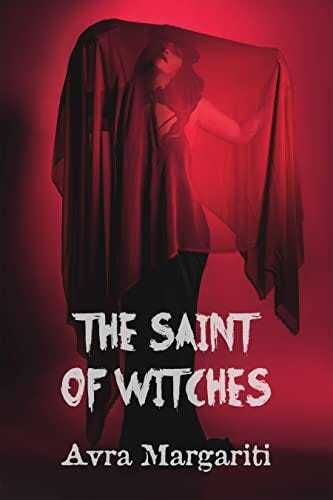 The Saint of Witches, Weasel Press, 2022The Saint of Witches (Weasel Press, 2022)by Avra Margariti
The Saint of Witches, Weasel Press, 2022The Saint of Witches (Weasel Press, 2022)by Avra MargaritiAvra Margariti is one of my favorite up-and-coming speculative poets, and this debut shows Margariti’s command of narrative and the poetic turn. Poems like “Moonlit, the Secret,” which brings the reader to surprise in only three stanzas, show how speculative poetry is the space to watch in terms of new SFF. Feminist, bloody, insightful, and queer af, this collection is full of delights.
Honorable Mentions to Add to Your TBR:As always, I can’t list ALL of the books that I loved in this short space, so I like to include a list of books you should FOR SURE add to your reading list but that I didn’t get time to review.
Flare, Corona by Jeannine Hall Gailey (BOA Editions, 2022)Halloween Hearts by Adele Gardner (Jackanapes Press, 2022)Mobius Lyrics by Maxwell I. Gold & Angela Yuriko Smith (Independent Legions, 2022)No Farther Than the End of the Street by Benjamin Niespodziany (Okay Donkey, 2022)Not a Princess, But (Yes) There Was a Pea & Other Tales to Foment Revolution by Rebecca Buchanan (Jackanapes Press, 2022)We’ve Been Here Before by Anne Carly Abad (Aqueduct Press, 2022)A full list of the nominated works for the Elgin Award is available on the SFPA website.
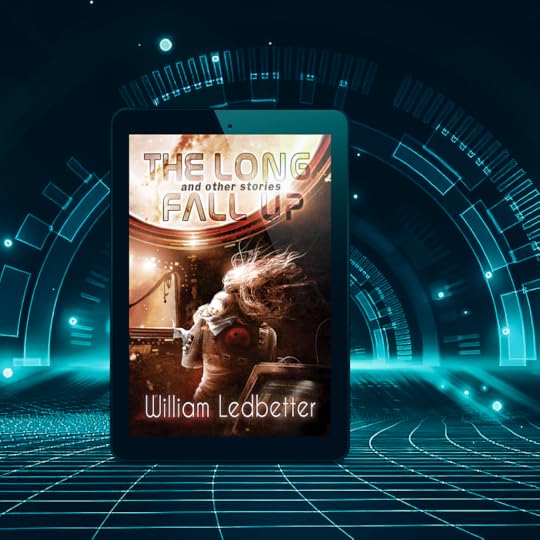 Forthcoming from Interstellar Flight Press: The Long Fall Up and Other Stories, by Nebula Award winning author William Ledbetter. Now available for pre-order!
Forthcoming from Interstellar Flight Press: The Long Fall Up and Other Stories, by Nebula Award winning author William Ledbetter. Now available for pre-order!Interstellar Flight Magazine publishes essays on what’s new in the world of speculative genres. In the words of Ursula K. Le Guin, we need “writers who can see alternatives to how we live now, can see through our fear-stricken society and its obsessive technologies to other ways of being, and even imagine real grounds for hope.” Visit our Patreon to join our fan community on Discord. Follow us on Twitter, Facebook, or Instagram.
[image error]The Best Speculative Poetry of the Year is Explosive was originally published in Interstellar Flight Magazine on Medium, where people are continuing the conversation by highlighting and responding to this story.
August 7, 2023
Book Launch for anOther Mythology by Maxwell I. Gold

“Maxwell I. Gold’s poetry pulls from the heart and bleeds truth onto the page.” — Michael Bailey, multi-award-winning author and editor.
Join us online to celebrate the publication of anOther Mythology by Maxwell I. Gold, a chapbook of poems that recast classic myths from across the globe in a queer light.
Date:
September 4, 2023
6:00 pm CST
Online via Zoom
by Maxwell I. Gold
From Thanatos to Hades, Maxwell Gold’s book of horror prose poetry reimagines myths from a queer perspective. Gold’s poetry merges camp sensibility and cosmic horror in poems that are beautiful, bloody, and barbed. A poetic soap opera of gods and monsters.
Maxwell I. Gold is a Jewish American multiple award nominated author who writes prose poetry and short stories in cosmic horror and weird fiction with half a decade of writing experience. Some of his books include Oblivion in Flux: A Collection of Cyber Prose from Crystal Lake Publishing and Bleeding Rainbows and Other Broken Spectrums from Hex Publishers. Five-time Rhysling Award nominee, and two-time Pushcart Award nominee, find him at www.thewellsoftheweird.com.
“Loosely based on Hesiod’s Theogeny, Maxwell I. Gold’s anOther Mythology deconstructs traditional mythic narratives and tropes in a defiantly transgressive take on cosmic origin stories. Indeed, the Muses must have conferred Hesiod’s kingly scepter of authority to Gold, and he uses it wisely. Gold fearlessly flings open closet doors, unveils dark deceptions, and reshapes the cosmos to unshackle the stars. A stunning reclamation of Greek myth.” — Carina Bissett, award-winning editor of Shadow Atlas: Dark Landscapes of the Americas
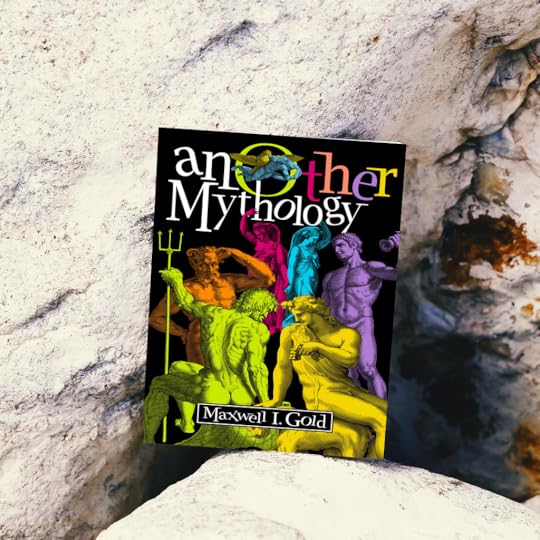
Registration is required for this event. Visit the Eventbrite listing to sign up!
[image error]Book Launch for anOther Mythology by Maxwell I. Gold was originally published in Interstellar Flight Magazine on Medium, where people are continuing the conversation by highlighting and responding to this story.
August 4, 2023
Introducing THE LONG FALL UP and Other Stories by William Ledbetter
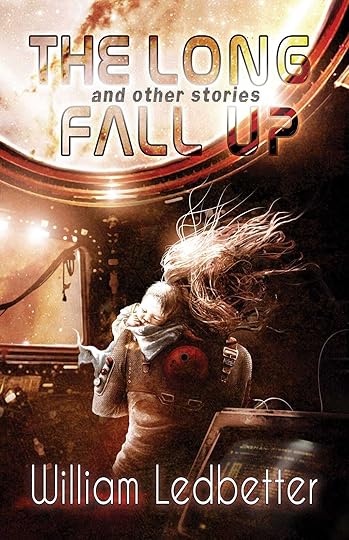
“William Ledbetter’s stories exists at the crossroads between hard and soft: they’re full of hard space, hard choices, and hard lives, but also the soft hearts of the people who work there, make them, and live them. Bill can do more in two pages than some authors do in twenty; he’ll make you love a sweater, fear for a ship, and more. So whatever your preference, hard or soft: if Bill Ledbetter has written a story, you want to read it. Simple as that.” — Trevor Quachri, Editor of Analog Science Fiction and Fact Magazine
Interstellar Flight Press is delighted to announce the publication of THE LONG FALL UP: and Other Stories by William Ledbetter!
From bestselling Nebula Award winning William Ledbetter comes a groundbreaking collection of science fiction short stories that will bend your heart like a black hole. From AI to robot medics to life on Mars, Ledbetter takes real tech, blends it with hard science fact, and invents futures full of fantastic fiction. Includes 17 previously published stories and one original story.
 About the Author
About the AuthorWilliam Ledbetter is a Nebula Award winning author with two novels and more than seventy speculative fiction short stories and non-fiction articles published in five languages, in markets such as Asimov’s, Fantasy & Science Fiction, Analog, Escape Pod and the SFWA blog. He’s been a space and technology geek since childhood and spent most of his non-writing career in the aerospace and defense industry. He is a member of SFWA, the National Space Society of North Texas, and a Launch Pad Astronomy workshop graduate. He lives near Dallas with his wife, a needy dog and three spoiled cats.
 About the Cover Artist
About the Cover ArtistVincent Sammy is a freelance illustrator who specializes in the genres of horror and science fiction. His work is a combination of traditional and digital media.
He has created artwork for publishers such as New Con Press, SST Publishers, Cemetery Dance, Jurassic London, Rosarium Publishers, and Thunderstorm Books. His work has also appeared in various publications such as Interzone, Black Static, Parsec, and Apex Magazine. He has been nominated for an “Artist of the Year” award by “This Is Horror” Awards for 2012 and 2013 He was shortlisted for a BSFA award in 2015 and the BFA Awards in 2021 and 2022. Some of his artwork has made appearances in movies such as CHRONICLE, TIGERHOUSE, and Stephen King’s THE DARK TOWER. He resides in Cape Town, South Africa, with his wife and daughter.
Find more of his work at karbonkay.wordpress.com.
“In one thousand words, William Ledbetter managed to completely captivate me with his story, ‘What I Am.’ Science fiction tales of this length rarely work for me. It’s so hard to compress solid science, plotting, and characterization into so few words. In this case, however, I was completely captivated by Oscar and his companion. The science fiction element was perfect. At the same time, Bill created a compelling situation and made me desperately care about his characters. These essential qualities are to be found in his longer works as well.” — Sheila Williams, Editor of Asimov’s Science Fiction[image error]
Introducing THE LONG FALL UP and Other Stories by William Ledbetter was originally published in Interstellar Flight Magazine on Medium, where people are continuing the conversation by highlighting and responding to this story.
August 1, 2023
Journaling for Nature Poets
July 28, 2023
Nature Is Diverse, so Poetry Should Be Too
Acquisitions from the 2022 Horror Novella Submissions Call

Interstellar Flight Press is delighted to announce the acquisitions from our 2022 Horror Novellas Submissions call. As the Managing Editor, I would like to thank everyone who submitted to us. This was a particularly complex call, as I came down with Covid in the midst of the submission call.
There are so many fantastic voices in horror right now, and I am delighted to be publishing these terrifying novellas. I would also like to extend my thanks to guest editor Lee Murray for helping us select these titles. Lee Murray is a powerful voice in horror. We absolutely would not be able to do these submission calls without our guest editors. We also thank our starship of volunteers who help with slush reading and keep me on track!
Lastly, we are always grateful for those patrons who support us via Patreon. If you sign up for just $1/month, you get access to early cover reveals, exclusive interviews, and our Discord chat.
First, Some UpdatesFor this call, I opted not to send a submitter survey. The main reason is that we have not seen enough participation in the past to ensure the data is accurate. For this reason, I will be shifting to including these questions as optional questions on future submission forms.
Secondly, we are in the process of revamping our submission process. Given the current state of publishing with AI as an emerging force, I have chosen to focus in 2023 on catching up on our publishing schedule and researching new modes of ensuring we publish the very best (human!) work.
We like to collect data on our submission process for interested writers. Our average response time was down for this call despite many setbacks, which makes me quite proud of our team and the support they provide.
We are always juggling the desire to send as many personal responses as we can to authors whose work we enjoyed with our response speed.
There are a lot of factors that go into selecting a book. We wanted a group of authors who represent some of the best writers in horror right now. We read each submission carefully, considering whether they are right for us.
All of our submissions are processed blind, i.e., with identifying information (names, bios) removed. Once a manuscript is bumped, it is always read by the managing editor(s) and/or guest editor. Also, if a manuscript is bumped, we send it to a second reader to get a second opinion. If it is bumped a second time, it may go to a third and fourth reader. In the case where we (the editors) know a submitter personally, we will usually get multiple reader opinions.
As always, we’ll be striving to make our submitter statistics more diverse and reflective of the world we live in. We will continue to push for gender parity in submissions. We will continue to solicit work from writers of color, women, writers with disabilities, and LGBTQ writers. I am always interested in feedback from submitters and members of the SFF community as to how we can improve.
If you’d like to support what we do, please consider joining our Patreon. We have a thriving community of writers on our Discord and love meeting new fans.
Submission Data: Acceptances, Rejections, etc.We received 190 submissions for this call.We selected 10 submissions for our final round (which were read by our guest editor).5 books were selected for publication. We sent 1 revise and resubmit request.10 submissions were withdrawn (This number appears higher than usual, but on average with past calls given the number of submissions.)Our average response time for this call was 86 days.Our fastest turnaround was 2 days.Our longest response was 236 days (These were primarily from the top 10 held submissions). This is about 60 days faster than our previous call.19 submissions were “bumped” from the slush reader pile. (This is an estimate, it is harder to calculate this one because the editors sometimes choose to bump a piece too!)6 submissions were rejected for not following our guidelines (explicitly not horror genre, not being fiction.)
Interstellar Flight Press is an independent small press. If you love what we do, we hope you’ll consider supporting us via Patreon. This helps us to pay our writers more and continue to publish amazing books. Small presses fill the gap by publishing works that wouldn’t get published otherwise.
Our guest editor has kindly provided some feedback on the process and on each submission accepted:
 Guest Editor’s Note by Lee Murray
Guest Editor’s Note by Lee MurrayIt was an honor to guest edit Interstellar Flight Press’ 2022–2023 novella call, a task which caused me both pleasure and pain — pleasure because of the incredible breadth and depth of dark fiction and horror works assembled, and pain because while I would like to have selected many more of your darkly weird fiction tales, budget and time constraints meant that wasn’t feasible. That said, I’d like to thank everyone who submitted their work to this call. I thoroughly enjoyed reading these chilling tales, comprising horror from across the spectrum, from cozy to unease to macabre body horror, and across the subgenres, including, for example, mystery, science fiction, fantasy, and dystopian. At times, I forgot I was supposed to be assessing the work at all, simply losing myself in the steaming entrails, charming villains, and weird worlds. While Holly and the team gave me no specific criteria to consider, I looked for stories with strong story arcs, complex characters, and deeply resonant themes, choosing tales that hooked me from the get-go and kept me turning the pages.
Congratulations to all the authors whose works were selected. Thank you for sharing your work with me. I can’t wait to see your stories in print. Everyone else, please put these titles on your must-read list now.
Without further ado, here are the horror novellas we accepted! Club Magritte by Nicola Lombardi, Translated from the Italian by J. Weintraub
Club Magritte by Nicola Lombardi, Translated from the Italian by J. WeintraubNotes on Club Magritte from our Guest Editor, Lee Murray: This can’t-look-away weird tale begins a little like an urban crime-noir, with its naïve grimdark character who cannot pay his debts but quickly devolves into something macabre and twisted. Written in a traditional style perfectly suited to the gothic nature of the narrative and with some truly scary elements, the story features themes of social inequality and betrayal. I love the ‘surreal’ metaphor of Magritte here since things are clearly not all they seem throughout this little page-turner. Not for the squeamish!
About the Author and TranslatorNicola Lombardi is an active participant in the Horror Writers Association. He has published in Italy the novels The Gypsy Spiders, Black Mother, Night Calls, The Red Bed, The Tank, and Strigarium, as well as seven collections of stories since 1989. In addition, he has published novelizations from the films of Dario Argento (Profondo Rosso and Suspiria) and translated works by Jack Ketchum, Seabury Quinn, Charlee Jacob, F.B. Long, and many others for the Italian market. Several of his stories have appeared in English, including in the anthologies The Beauty of Death: I & II. In 2021 Tartarus Press published his collection The Gypsy Spiders and Other Tales of Italian Horror. (“Lovers of postwar narratives and surrealist horror won’t want to miss this.” — Publishers Weekly). Full bibliography at www.nicolalombardi.com.
J. Weintraub has published fiction, essays, and poetry in all sorts of literary places, from The Massachusetts Review to New Criterion. A member of the Dramatists Guild, he has had short plays, radio dramas, and podcasts produced throughout the world. As a translator, he has introduced the Italian horror writer Nicola Lombardi to English-speaking readers, and his edition of Lombardi’s The Gypsy Spiders and Other Tales of Italian Horror was published by UK’s Tartarus Press in late 2021. In 2018, his annotated translation of Eugène Briffault’s Paris à table: 1846 was published by Oxford UP. More at https://jweintraub.weebly.com/
 A River Wide by Amanda J. McGee
A River Wide by Amanda J. McGeeNotes on A River Wide from our Guest Editor, Lee Murray: A beautifully dark tale of society’s demonization of women through the lens of witch mythology and set under the Appalachian Mountains, I devoured this gorgeous novella. An understated horror narrative with important themes of trauma and otherness and ‘enchanting’ prose, which put me in mind of Lauren Elise Daniels’ Serpent’s Wake, this one was an easy pick for me. Featuring small-town insularity with all its simmering undercurrents, the story is populated with pop-off-the-page characters who resonate for their fallibility and their authenticity.
About the AuthorAmanda J. McGee is a planner by day and a writer by night. She has degrees from Hollins University and Virginia Tech, where she studied languages, identity politics, policy, and infrastructure. She is the author of the dark epic fantasy series The Creation Saga and is an Art Matters Grant recipient, a program of the City of Roanoke and the National Endowment of the Arts. Her novella “Viridian” was published in the anthology A SINISTER QUARTET, which made the 2020 Locus Recommended Reading List.
When not writing, Amanda can be found reading books or hiking mountains, depending on the season. She lives in Southwest Virginia with the love of her life, two fluffy cats, and a plethora of plants. You can find out more on her website at http://amandajmcgee.com.
 The Beast You’ve Made of Me by Emma Osborne.
The Beast You’ve Made of Me by Emma Osborne.Notes on The Beast You’ve Made of Me from our Guest Editor, Lee Murray. Who doesn’t love a zombie tale? Not your typical zombie narrative, The Beast You’ve Made of Me revolves around the protagonist’s slow ‘undead’ degeneration into something less than human and in some ways, is reminiscent of Mike Carey’s The Girl With All the Gifts. I loved the first-person approach and the deep character insights on themes of abuse, neglect, and, ultimately, self-awareness and self-actualization in the face of society’s breakdown. The importance of memories as being an essential part of our make-up also contributed to the magic of this gruesome little tale.
About the AuthorEmma Osborne is a queer fiction writer and poet from Melbourne, Australia. Their writing has appeared in Uncanny Magazine, Nightmare Magazine, Shock Totem: Tales of the Macabre and Twisted, Apex Magazine, Queers Destroy Science Fiction, Pseudopod, the Review of Australian Fiction, the Year’s Best Australian Fantasy and Horror, GlitterShip, HOMETOWN HAUNTS, edited by Poppy Nwosu and WASTELANDS 3, edited by John Joseph Adams.
Emma is a graduate of the 2016 Clarion West Writers Workshop (Team Arsenic forever!). They are an Aurealis Award and Australian Shadows award finalist.
Emma lives in Naarm Melbourne with their girlfriend and many cats. You can find them on Twitter at @redscribe.
 I Could Be Your Family Too by E.L. Chen
I Could Be Your Family Too by E.L. ChenNotes on I Could Be Your Family Too from our Guest Editor, Lee Murray: This hotel/house on the edge of the woods story has a distinctly Psycho feel to it, but it also has a little of a Hallmark Christmas tale, offering creeping dread and unease, sprinkled with blue eyes and early morning coffee. Such a strange blend, this mix of nice and not-so-nice, the reader is never quite sure who to be most scared of here. With its underlying anti-Asian sentiment and the small-town approach to the pandemic, this story felt frighteningly plausible to me.
About the AuthorE. L. Chen is the author of The Good Brother and Summerwood/Winterwood, the latter of which was longlisted for the Sunburst and recommended as a Best Book for Kids and Teens by the Canadian Children’s Book Centre. Her short fiction has been published in venues such as Strange Horizons, On Spec, Lackington’s, and The Dark. She lives in Toronto, Canada, with her son.
 Spooky Lovers by J.V. Gachs
Spooky Lovers by J.V. Gachs
Notes on Spooky Lovers from our Guest Editor, Lee Murray: If there is such a thing as cozy horror, then this is it. A mix of intrigue and humor, this contemporary serial killer tale, with its themes of revenge and redemption, was an easy read and highly entertaining. An empowering and uplifting twist on the traditional final girl trope, Spooky Lovers gives new meaning to the notion of being ghosted on a dating app.
J.V. Gachs is a Spanish classicist, and writer, currently working as a Latin teacher. Writing in English and Spanish her work has been featured in anthologies like Scott J. Moses’ What One Wouldn’t Do and Chelsea Pumpkins’ AHH! That’s What I Call Horror! Her first novel, Epiphany, will be released by Off Limits Press in December 2023. Obsessed with sudden death, ghosts, and female villains, she always writes with a cat (or two) in her lap.
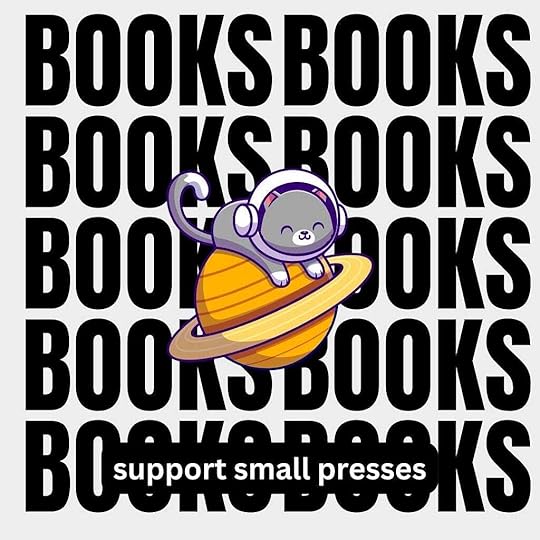
Interstellar Flight Magazine publishes essays on what’s new in the world of speculative genres. In the words of Ursula K. Le Guin, we need “writers who can see alternatives to how we live now, can see through our fear-stricken society and its obsessive technologies to other ways of being, and even imagine real grounds for hope.” Visit our Patreon to join our fan community on Discord. Follow us on Twitter, Facebook, or Instagram.
[image error]Acquisitions from the 2022 Horror Novella Submissions Call was originally published in Interstellar Flight Magazine on Medium, where people are continuing the conversation by highlighting and responding to this story.







